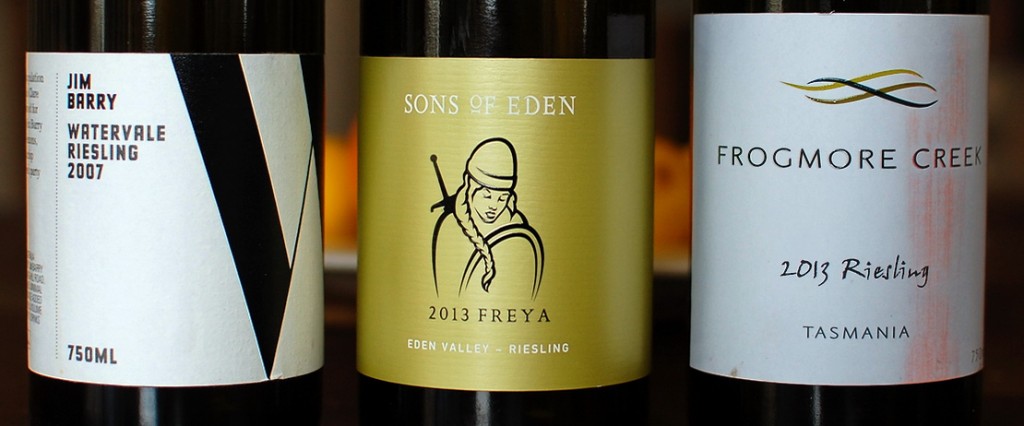‘Australia is the world’s second most prolific grower of Riesling grapes after Germany,’ Jancis Robinson tells us and adds: The climate is quite warm enough to ripen every Riesling grape to the max and the challenge is to retain acidity, so virtually all Australian Riesling is bone dry. There is no need for any softening sweetness.’
Most German Rieslings don’t get enough sun to reach full ripeness, so they tend to soften the harsh acid with a touch of sweetness. Germany’s most sunny corner is the Pfalz in the south-west corner of the country just across the border from Alsace where all the names are German but the people speak French. Alsace gets enough sunshine to ripen its Rieslings, and most of them are dry.
Riesling in Australia
The Clare and Eden Valleys in South Australia have long been our Riesling country, and still are the biggest producers despite the South Australian government’s misguided vine pull scheme in the eighties. Since that time, Western Australia and Tasmania have planted more and more Riesling. The wines of the great Southern have less fruit and more herbs and minerals than their South Australian cousins, which feature ripe limes and bath powder when young. Tasmania’s Rieslings are somewhere in between.
In most years, our better Rieslings will age for a decade or more. At 10 years of age they’ll smell and taste of buttered toast and lanolin, sometimes even hair-oil. The overall effect is positive and quite unique, but will mostly be enjoyed by the cognoscenti. Riesling in Australia has an image problem: Most consumers prefer awful Sauvignon Blanc whites to quality Rieslings at the same price point.
Unpopularity of Riesling
‘Riesling is racy, crisp and stylish. Riesling has purity and precision in abundance; Riesling is a great food wine yet easy to enjoy on its own; Riesling repays cellaring more reliably than most wines. Riesling is also the best wine value for money, so why is it so hard to get consumers excited about it?’ So I wrote in Riesling is the Victim of Bad Marketing.
I also wrote: ‘I’ve never seen the positives of Riesling stated in a way that makes punters think: I really want to try that.
- Riesling is crisp, racy, zippy, refreshing, not heavy and not oaked
- Riesling has terrific flavour and gets better with a bit of age
- Young Riesling makes a great aperitif or anytime drink
- Riesling is a great summer picnic wine
- Riesling is low in alcohol – 12% on average
- Riesling is a smart wine for smart people
 Riesling is great value for money
Riesling is great value for money
In another post, Australia is Blessed with the Unpopularity of Riesling, I made a simple point that the reason more people don’t drink Riesling is dead simple: wine and food writers tell them to drink it with the wrong foods – seafood, cold salads, sashimi, stuffed capsicum, eggplant and more. The only Riesling that goes with seafood is a very young steely, austere, herbaceous style. Most Rieslings have too much sweet fruit to go with seafood.
Riesling and chicken, most of all roast chicken, is a marriage made in heaven. Next time you have roast chicken, open a good bottle of Riesling, and you’ll never look back. Meanwhile, the continued unpopularity of Riesling means we can buy very high quality wines for $20 and less.
Let’s enjoy it while we can.
Kim
